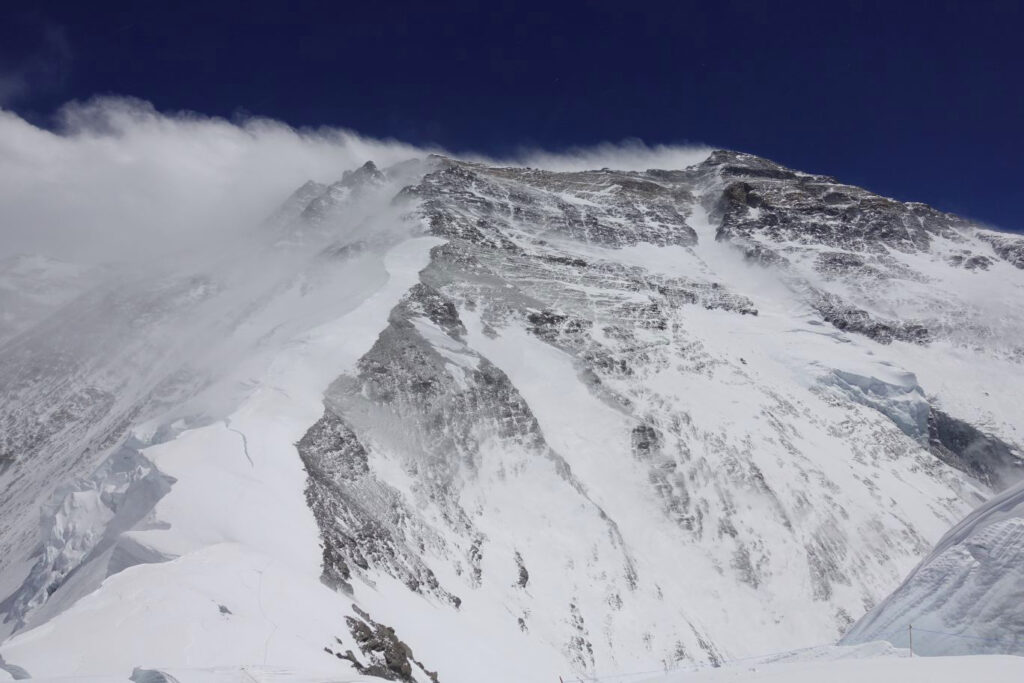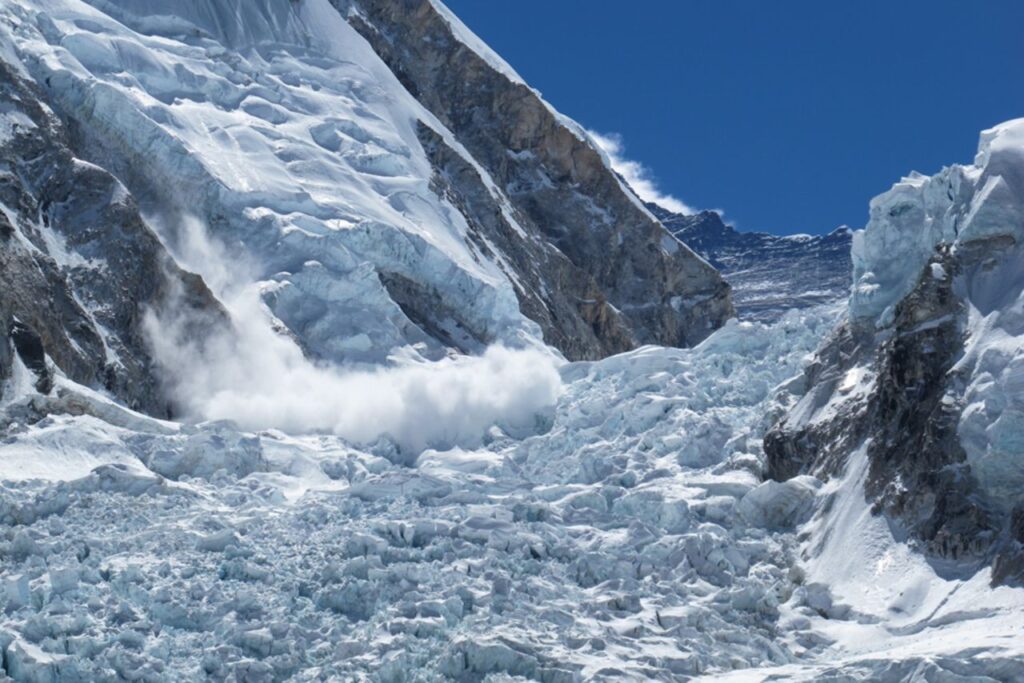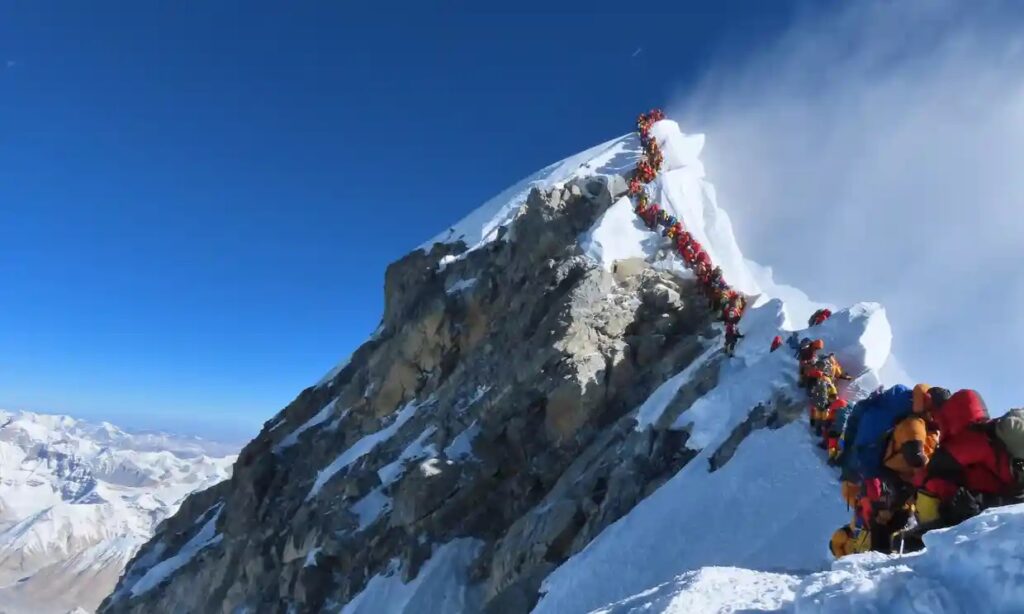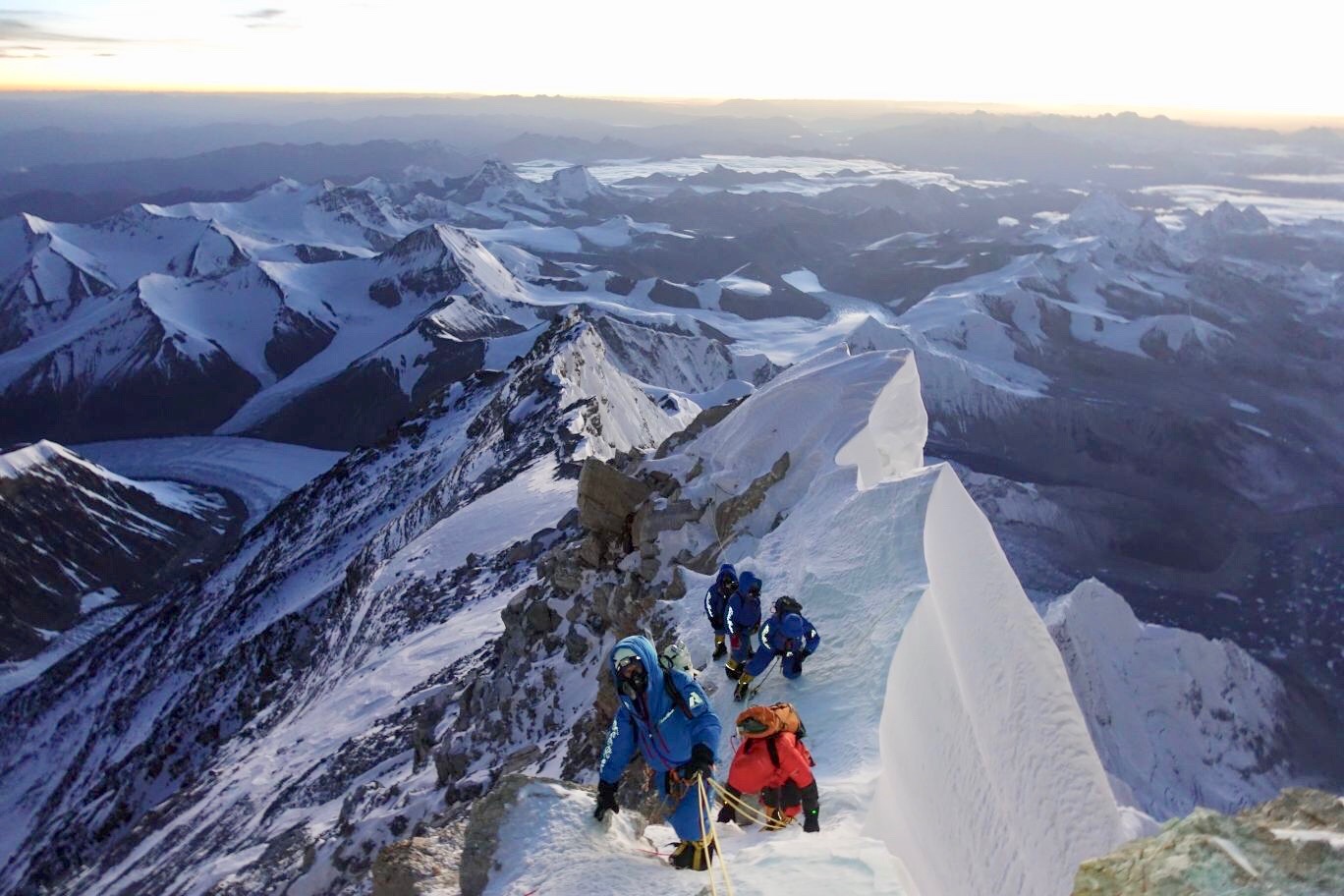The Hazards of the South Side of Mount Everest

As mountain guides, our job is to manage and reduce risk as our teams climb. Mountains are inherently dangerous, and there is no such thing as a “safe” 8,000m peak. But, through education, experience, and sound decision-making, our certified mountain guides can reduce the risk of a climb to an acceptable level. When the mountain or route presents a hazard that we cannot mitigate with informed decision-making, such as the Khumbu Icefall and the overcrowding on the south side of Everest, it makes it so that we cannot do our jobs effectively. We pride ourselves on our performance as guides and risk mitigators, and so we refuse to climb routes that prevent us from doing our jobs with confidence. Here, we take a deeper dive into how Alpenglow views risk, the hazards found on the south side of Everest, and our reasoning behind climbing exclusively from the North Side.
Objective vs Subjective Hazard:
In order to better understand our decision-making, it is important that we define hazard. There are two main types of hazard: objective and subjective.
Objective Hazard:
In short, objective hazard is random risk that is inherent to our environment and thus out of our control. Things like serac falls, known avalanche slopes, and crevasses are considered objective hazards.

Subjective Hazard:
Subjective hazards are risks that we control directly, revolving largely around our real-time decision making, technical skillset, and ability to read conditions Subjective hazards may include, but are not limited to: falling due to failure to properly load our belay device on rappel, choosing to climb in dangerous weather or avalanche conditions, or continuing a summit push despite a team member showing signs of altitude sickness.
When guides think about hazards, we first separate them into these two categories. Then, we ask ourselves: is this hazard something that I can mitigate? Subjective hazards always exist, but can be mitigated by experienced team members and professional guides who make informed decisions. Objective hazards, however, cannot always be mitigated by good decision-making. This is where we as an outfitter are uncomfortable having our high attitude workers, guides, and clients assume this level of random risk. While decision-making on the mountain is a complex and technical process, our conclusion is simple: the south side of Everest has objective hazards that we cannot mitigate, and so we choose to not climb it.
The Hazards:
The Khumbu Icefall:
The Khumbu Icefall is the most prominent hazard on the south side of Everest. The Icefall stands between Base Camp and Camp 1, and is made up of 2,000’ of loose ice seracs that have been known to fall without warning. There have been a total of 47 recorded deaths in the Icefall, with recent deaths in 2006, 2009, 2014, 2015, and 2023. On April 12th, 2023, three Sherpa (Tenjing Sherpa, Lakpa Sherpa, and Badure Sherpa) were killed in a serac fall while climbing through the Icefall. In 2014, an avalanche cascaded into the Icefall and took the lives of 16 Sherpa. The hazard that the Icefall presents is random, and the risk cannot be controlled or mitigated. It is a 2,000’ section of climbing that forces climbers to leave their safety up to chance.

Paying clients will typically pass through the Icefall 4 times at minimum: twice during an acclimatization rotation, and twice during their summit bid. Sherpa, however, may make as many as 20 trips through the Icefall to set up the lush, huge camps that we see these days at Camp Two. The risk that the high altitude workers are taking is nearly 5x that of the clients.
Before the 2014 accident, Alpenglow founder Adrian Ballinger reduced the lavish Camp 2 accommodations and instead opted for a more alpine-style camp to minimize the Sherpa’s exposure to the Icefall. This meant that Sherpa were only making 6 trips through the Icefall rather than 20. After the 2014 accident, Adrian felt that the risk of the Icefall was too great to send anyone through, whether Sherpa, guide, or client.
There are plenty of years when there are no accidents in the Icefall and everything goes perfectly. But in Adrian’s eyes, there was no way to run a sustainable business when his employees and clients were taking on so much objective danger year after year. The years where there are no accidents, the question asked at the end of the season was always: Did we get away with something this year? Did we do all that was in our power to run a professional, safe expedition for the entire team?. Adrian came to feel that the Icefall prevented us from ending a season on Everest knowing that we did everything we could to provide the highest-quality mountain experience possible, even in the years where there was no accident. The risk is just too high.
Overcrowding:
High-altitude mountaineering’s rise in popularity has caused a drastic annual increase in the number of people attempting to climb Mt. Everest. To be clear, we do not see this as a bad thing, and we are encouraged to witness the growth of the industry. However, overcrowding has compounded objective hazards that teams are forced to try to mitigate. Because there are typically only two main summit windows during the spring Himalayan season—often a mere matter of days—all teams on any given mountain are pushing for the summit simultaneously.

There have been an estimated 400 – 500 climbing permits issued for the 2023 spring Everest season, comprising 30 or 40 teams on the mountain. For each climber, there is roughly 1 Sherpa, so there will be around 1000 people climbing Everest this season. The largest team is made up of over 100 people, with dozens of additional support staff and Sherpa. The sheer number of climbers on the mountain can create lines and blockages that increase time spent in hazardous areas (like the Khumbu Icefall, or above 8,000m) two or three times over. In May 2019, there were 11 deaths on Everest, many of which were attributed to the line of climbers that formed at the Hillary Step just below the summit of Everest.. Climbers spent hours standing still above 8,000m, using precious oxygen and energy as they waited for their turn to reach the summit. These lines are now commonplace on the South Side, and have become objective hazards that can be impossible to mitigate.
Inexperienced Teams:
It takes both skill and significant experience to reach the summit of Everest. A growing abundance of inexperienced teams on the tallest mountain in the world puts everyone at risk. You see everything on the south side of Everest. From teams made up of extremely qualified climbers, to teams with people who are learning how to walk in crampons for the first time.
The experience of your team matters when you’re climbing Everest. An inexperienced member could have an accident or need additional support from the guides, pulling resources from you and the rest of the team to manage the risk of the inexperienced climber. This lowers your chances of success, and your margins of safety. When shit hits the fan, as it sometimes does when climbing the tallest mountain on earth, it’s important to know that everyone around you can contribute to the resolution of the situation.

The North Side of Everest:
The objective hazards of the South Side of Everest were already front of mind for Adrian and his team before the avalanche in 2014, but that tragic incident served as the impetus for pivoting his teams to the North Side of Everest.
Risk will always be present when seeking the summit of the worlds tallest mountain, but we can make a decision as to which side we’ll climb and how much objective hazard we’re willing to accept. We firmly believe that the North Side of Everest is the better side of the mountain. It’s cleaner, there are fewer people and fewer teams, and most notably, the objective hazard of the north side is significantly less than on the south. We send teams to the North Side of Everest knowing that our entire team is taking on a reasonable degree of risk.
In the wake of COVID, the North Side of Everest has been closed since 2019. Our resolve in the North Side of Everest being the only ethical option for our company has meant that we’ve not been to the mountain for four seasons. We’ll be returning to the North side of Everest for the first time since 2019, and we are beyond excited to once again have a team attempting to reach the summit.